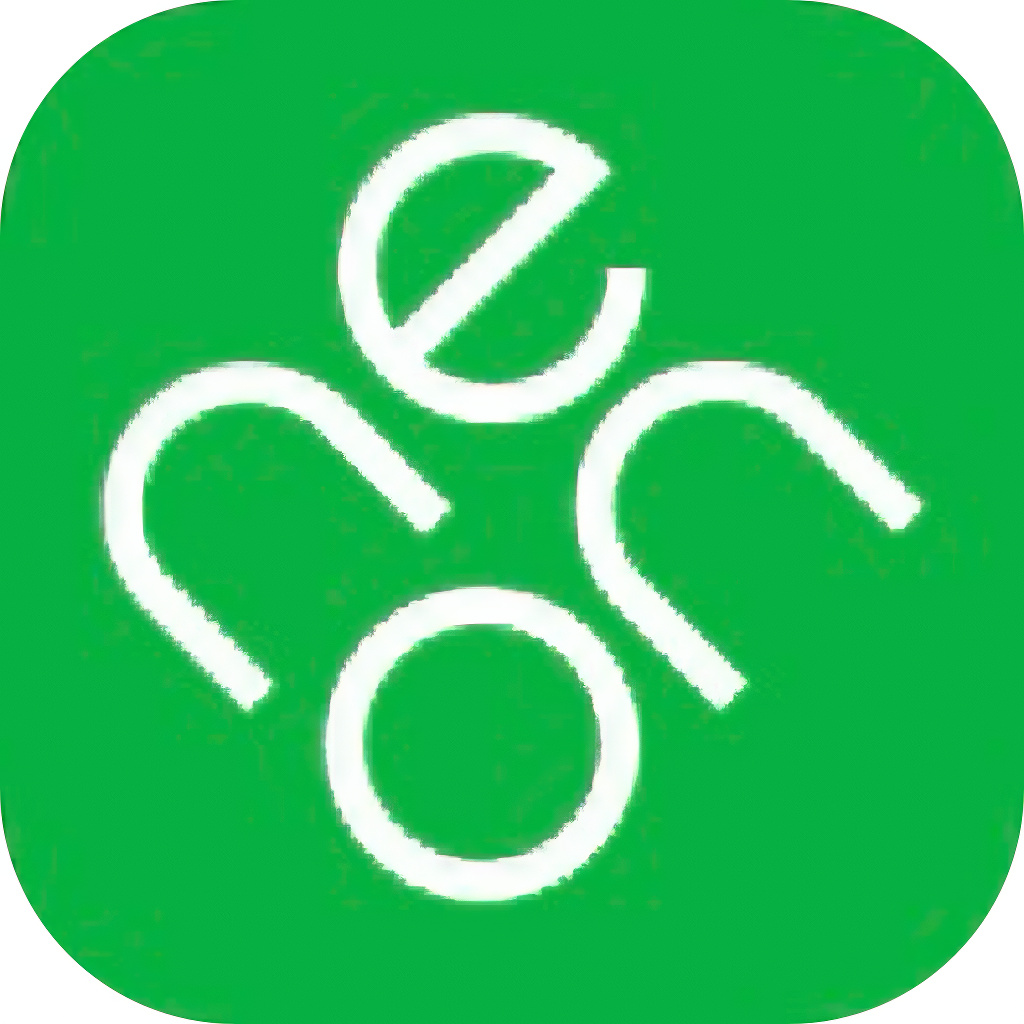Sustainable Banking in Switzerland
The new local app comparison guide for sustainable banking
trends ✔︎ comparisons ✔︎ deciphering ✔︎ innovations ✔︎
trends ✔︎ comparisons ✔︎
decrypts ✔︎ innovations ✔︎
spiel
Swiss sustainable banks ranking – December 2025
“A critical eye to compare and choose” heyneo.ch
Switzerland's green neobank. We evaluated Radicant from a sustainability perspective: its strengths in responsible investing, its ecological weaknesses, its banking services geared to sustainable impact, and its green fees and features. Find out more about Radicant's transparency and commitment to the environment. To receive up to CHF 200, use promo code B99703 when you open your account.
Neon Green: the Swiss neo-bank that plants trees for every CHF 500 spent. Discover its ecological initiatives, its green banking services and how it democratizes sustainable finance. Use promo code VSWH3C when opening your account to receive your free card.
Yuh: a green bank? We examine how its sustainable investment options and ESG transparency can contribute to a positive impact, despite the absence of direct "green" features. Use promo code C9QK67 to receive 500 SQW (with an initial payment of CHF 500.-).
We evaluated Zak Plus from a sustainability perspective: its ecological contributions, its impact monitoring limitations, its green banking services, and its environmental costs and features. Find out how Zak Plus supports biodiversity and CO2 capture through its Green Impact program. Use promo code KNSGS6 when opening your account to receive CHF 25.
What if your money could save the planet?
Every bank transfer,
every card payment,
every withdrawal contributes to financing various economic activities.
Some are good for the planet, others much less so.
Why are traditional banks no longer up to the job?
1. 99.9% of the banks’ climate impact is invisible: for every tonne of CO2 they emit directly, they finance 700 through their investments.
2. Structural inertia: traditional banks are struggling to transform their obsolete systems at the pace demanded by the climate emergency.
3. Persistent conflicts of interest: they justify their fossil fuel investments by the need to gradually support their customers’ transition.
4. Contradictory investments: banks finance polluters while claiming to influence them from within.
5. Lack of transparency: sustainability is not at the heart of their business model. They struggle to be transparent about the ecological impact of their investments.
Image: heyneo.ch, Danske Bank – 2023 / CDP Financial Services Disclosure Report
The arrival of sustainable neo-banks: “the ecological and responsible alternative”.
Logically, instead of financing behind the scenes what we avoid buying, banks could develop services to use and invest our money in line with our convictions.
In the land of banking, the idea of a green, responsible bank is gaining ground. With its leverage, a bank could amplify the impact of our responsible choices on a daily basis: “We make an effort, they make an effort”.
Polluting banks really make me green!
Neo – Unsolicited advice (as usual).
What is a sustainable neobank?
Green neobanks are online banks committed to reducing their environmental impact and that of their customers. Compared with traditional Swiss banks such as UBS or Postfinance, they have several points of differentiation:
- They invest primarily in sustainable sustainable projects.
- They limit their carbon footprint thanks to the absence of physical agencies, in particular.
- They develop offers and functionalities to democratize responsible banking and finance.
- They link the use of their services to environmental action projects.
- They promote greater transparency.
The questions we ask
Are these “green” neobanks safe?
Are they as transparent as they say?
What are their initiatives really worth?
Is my individual impact really significant if I take this step?
Neon Green: a “green” bank account focused on tree planting
Neon Green is the sustainable offering from Zurich-based fintech Neon banque. Neon Green was launched in 2012.

His main initiative?
- One tree is planted for every CHF 500 spent with the Neon Green card.
- Over 2 million trees have been planted since the launch.
- Estimated offsetting of 600,000 tonnes of CO2 over the lifetime of the trees.
Sustainable functionality
- Mastercard’s cherry wood card reduces plastic use by 80%.
- A dashboard to track personal impact (trees planted, “forest level”).
- Extended 3-year warranty on electronic devices purchased with the card.
Partnership
Collaboration with the NGO Eden Reforestation Projects to plant trees in Haiti and Madagascar.
Transparency
Quarterly certificates showing the number of trees planted.
Pricing
Monthly fee: CHF 5.
Comparison between Neon Green vs. Radicant, Yuh and Zak Plus
To put it in a nutshell: if we consider ecological criteria first, the differences are significant. Neon Green plants one tree for every CHF 500 spent. A user who spends CHF 2,000 a month contributes to 4 trees a year. Radicant, on the other hand, concentrates on sustainable investment, without linking environmental action to day-to-day spending.
The monthly fee for Neon Green is CHF 5, including Mastercard. Zak Plus charges similar fees to finance climate projects, but does not offer extended warranties on electronic devices like Neon Green. Yuh does not charge a monthly fee, but does not link its services to a specific environmental impact.
The Neon Green application displays the carbon footprint of every purchase. This visualization reinforces the link between consumption and ecological action, a function absent from Radicant and Yuh.
Neon Green requires a minimum investment of CHF 2,000 via Inyova. Radicant lets you invest as little as CHF 1, and Yuh as little as CHF 25 in ETFs. These thresholds influence the choice of users according to their means.
Neon Green’s wooden card is less resistant to the test of time than the plastic cards of Radicant and Yuh. This choice of material underlines Neon Green’s ecological intent, but also a form of contradiction in commitment.
Neon Green chooses to offset 110% of its CO2 emissions. A regular user helps offset approximately 100 kg of CO2 per year. On their side, Radicant and Yuh do not clearly communicate about their carbon offsetting.
Compared with other banks, Neon Green focuses on concrete, measurable action. It makes daily impact tangible, which responds to a need and a state of mind among users. This approach is sufficiently concrete and accessible to help democratize sustainable banking.
For whom?
Neon Green is aimed at people concerned about their day-to-day environmental impact, offering measurable, concrete actions, but may not be suitable for those who prefer more varied or less sustainability-focused investment options.
Zak Plus: the bank account with a contribution to climate protection
Zak Plus is the premium offer from Zak banque (the Cler bank app).

His main initiative? Zak Green Impact :
- 0.2 cents donated to a climate protection project for every franc spent with your Visa Debit card
- 562 tonnes in 2023 and 263 tonnes of CO2 offset in the first half of 2024
- Half-year target of 250 tonnes exceeded
Sustainable functionality
- Automatic contribution via card transactions.
Partnership
Working with South Pole to select and finance climate projects.
Transparency
Information on supported projects is available on the website.
Pricing
Monthly fee: CHF 8
Comparison between Zak Plus vs. Radicant, Neon Green, Yuh
To give you an idea: Zak Plus funds environmental initiatives through its Zak Green Impact program, where every card payment supports climate projects, a different approach from Neon Green, which plants a tree for every CHF 500 spent. This method allows users to support specific projects without requiring any action on their part.
Zak Plus has a monthly fee of CHF 8, which includes free worldwide withdrawals. In comparison, Neon Green charges CHF 5 per month while offering a direct environmental impact, while Yuh charges no monthly fee, but does not associate its services with an immediate ecological impact.
The Zak Plus app does not offer carbon footprint tracking for purchases. This feature, offered by Neon Green, has incentivizing qualities. For Zak Plus, this would allow users to visualize their overall contribution to projects supported by the Green Impact program with transparency on the impact of expenses.
In terms of sustainable investment, Zak Plus allows you to open a 3a retirement savings account and invest in responsible securities. However, the minimum required to get started may be higher than with Radicant or Yuh. In practice, Radicant allows you to invest as little as CHF 1 in its sustainable funds, while Yuh offers ETFs accessible from as little as CHF 25.
The Zak Plus Visa Debit card is made of standard plastic, but we’ve seen that the question of the durability of the card material is easily debatable. However, Zak Plus offsets the environmental impact of its cards through its Green Impact program.
Zak Plus communicates its environmental commitment through its Zak Green Impact program, but provides fewer details on the specific impact of each transaction than Radicant or Neon Green.
Compared with other banks, Zak Plus is not just associated with “green” features. It offers several other advantages. The automatic contribution allows you to support particularly relevant and coherent environmental projects, promoting biodiversity and local CO2 capture.
For whom?
Zak Plus is aimed at customers who want automatic environmental impact via their daily banking transactions, but may disappoint those looking for detailed carbon footprint tracking or more sophisticated green investment options.
Promo Code

Free account ✔︎
Radicant: investment bank focused on the UN’s SDGs
Radicant is a Swiss digital bank focused on sustainable investment and aligned with the UN’s Sustainable Development Goals (SDGs).

Its main initiative? An impact rating system
- The Radicant “SDG Impact Score” evaluates the impact of companies on the 17 Sustainable Development Goals of the United Nations (SDGs).
- Rating scale from -100 to +100
- Used for investmentselection and portfolio construction
Sustainable functionality
- Carbon footprinttracker to monitor the environmental impact of spending
- Saveback program: 1% of card spending donated to sustainable investment portfolio
Transparency
- Detailed reporting on theimpact of investments (PAI, EU taxonomy)
- Display of ODD ratings for each company in the portfolio
Pricing
Radicant offers a free account with no monthly fees.
Comparison between Radicant vs Neon Green, Yuh and Zak Plus
Radicant stands out for its impact rating system based on the UN’s Sustainable Development Goals (SDGs). The bank offers a more sophisticated approach to sustainable investment than its competitors. Unlike Neon Green, which focuses on tree-planting as a concrete action, or Yuh, which offers a few sustainable ETFs, Radicant integrates the SDGs into itsentire investment offering.
While Zak Plus contributes to specific climate projects, Radicant enables investors to precisely target their impacts through a diversified range of sustainable financial products. This approach could appeal more to investors seeking fine-grained control over the impact of their portfolio.
When it comes to transparency, Radicant surpasses its competitors with detailed reports on the environmental impact of each investment. This goes beyond Zak Plus’ simple carbon offset certificates or Neon Green’s reports on the number of trees planted.
Radicant’s user interface, although more more complex than that of Yuh or Neon Green, offers a more in-depth experience for impact-conscious investors. However, this complexity may put off novice users who prefer the simplicity of Neon Green or Yuh.
By integrating the UN’s Sustainable Development Goals into its offering, Radicant transforms sustainable investment into a “precise science”. Its rating system assesses the environmental impact of investments with a rigor that goes far beyond that of other “green banks”.
For whom?
Radicant targets a more informed segment of the sustainable finance market, offering a comprehensive solution but potentially more demanding than its competitors. This approach could attract investors seeking a measurable and personalized impact, while remaining less accessible for those who prefer simpler and more direct solutions.
Promo Code

Free account ✔︎
Yuh: investment platform with sustainable options
Yuh banque encompasses an ergonomic financial platform designed to democratize investment.

Main initiative: Sustainable investments
- Offering ETFs with ESG scores scores
- Sustainable development investment themes
Transparency
Information on supported projects is available on the website.
Special features
- “Trending Themes“for sustainable investment
- ESG rating of investment products
- Fractional trading in sustainable ETFs
Transparency
Display of combined ESG ratings for each investment product in the application.
Pricing
Apart from investment transaction fees, the Yuh account is free of charge.
Comparison between Yuh vs. Neon Green, Radicant and Zak more
Yuh offers sustainable ETFs and displays an ESG score for each investment, facilitating access to responsible investment. This approach can potentially have a greater positive impact on the environment than tree-planting or carbon offsetting, as it enables investors to directly support companies that adopt sustainable practices.
The Yuh app offers a clear interface where users can easily assess the ESG score of companies. This enables informed decision-making and reinforces commitment to responsible investment. In comparison, Neon Green focuses on concrete actions such as tree planting, but does not provide the same level of analysis on investments.
Unlike Neon Green (CHF 5) and Zak Plus (CHF 8), Yuh does not charge a monthly fee. However, Yuh does not link its services to a direct environmental impact, as Neon Green does with its tree planting. This lack of direct connection could diminish the appeal for some users seeking an immediate impact.
In terms of investment, Yuh allows investors to invest as little as CHF 25 in sustainable ETFs, which represents an accessible entry threshold. By contrast, Neon Green requires a minimum of CHF 2,000 via Inyova for its investment options. This makes Yuh more attractive to those wishing to start investing without a high financial commitment.
Yuh’s bank card is made of standard plastic, which raises questions (or not) about its durability compared with Neon Green’s wooden card. Yuh does not communicate on the environmental impact of its cards, unlike Zak Plus, which includes this dimension in its Green Impact program.
The lack of transparency on the overall impact of Yuh’s services could be linked to its founding companies, Swissquote and PostFinance, which have different and less sustainability-focused business models compared to other market players. This is a hypothesis…
Yuh makes sustainable investment accessible through a range of ETFs and easy-to-read ESG scores. This approach enables users to understand the environmental impact of their investments, while retaining flexibility in their investment choices.
For whom?
Yuh simplifies sustainable investment. It helps to democratize it by offering ETFs and ESG scores that are easy to understand. Its approach enables users to understand and act on the environmental impact of their investments, without committing to direct ecological actions.
Promo Code

Free account ✔︎
Radicant vs. Neon Green vs. Yuh vs. Zak Plus
When we compare the criteria from the user’s point of view :
Criteria | Neon Green | Radicant | Yuh | Zak Plus |
|---|---|---|---|---|
Green features offering | ✔︎ | ✔︎ | ✘ | ✔︎ |
CO2 / GHG emissions tracking | ✘ | ✔︎ | ✘ | ✘ |
Compensation program | ✔︎ | ✘ | ✘ | ✔︎ |
Incentive gamification | ✔︎ | ✔︎ | ✘ | ✘ |
Sustainable investment products | ✔︎ | ✔︎ | ✔︎ | ✘ |
Criteria comparison focused on the banks themselves:
Criteria | Neon Green | Radicant | Yuh | Zak Plus |
|---|---|---|---|---|
Reduction of CO2 / GHG emissions | ✘ | ✘ | ✘ | ✘ |
Compensation of remaining emissions | ✔︎ 110% | ✘ | ✘ | ✔︎ |
Responsible investments | ✔︎ | ✔︎ | ✔︎ | ✔︎ |
Transparency | Medium | High | Medium | Low |
Credits promoting ecological transition | ✘ | ✘ | ✘ | ✘ |
Are Switzerland’s sustainable neobanks living up to their promise?
Yes.
Switzerland’s neobanks are not making false promises about their ecological and responsible commitments.
Does a sustainable neobank stand out from the rest?
Across the industry, some banks are moving faster than others.
On the scale of the climate emergency, none at all.
In the face of commendable initiatives, the wall of ecological reality :
The impact of “green” neobanks is limited, with actions such as tree planting or carbon offsetting having a questionable real impact in the short term.
The actions are symbolic, but do not lead to profound structural and organizational changes.
Should sustainable neobanks be encouraged? Of course we should.
They must meet the challenge of profitability:
- Higher costs.
- A still limited customer base.
- Increased competition.
Not yet a revolution, but “a step in the right direction”… 🌍
Raising awareness: they help awaken and educate consumers about the environmental impact of their finances.
Pressure on the sector: their existence is pushing traditional banks to improve their practices.
Swiss banking innovation 🇨🇭: they are experimenting with new models and developing new functionalities that make the Swiss banking industry more sustainable.
How can banks optimize their responsible approach?
To have a real impact, neobanks in Switzerland should :
- Enhance the transparency of their investments.
- Develop attractive financial products focused on the ecological transition.
- Keep inventing.
- Work with regulators to find strategic levers for impact.
Whatever the case, banks that take a stand for the environment are all right to do so. We’re fans!
Whatever the case, banks that take a pro-environment stance are all right to do so. We’re fans!
Open a responsible bank account in Switzerland in just a few minutes 🌱
- Radicant: Use the promo code B99703.
- Neon Green: Take advantage of the code VSWH3C.
- Yuh: Enter the code C9QK67.
- Zak Plus: Use the code KNSGS6.
- Radicant Closes its Doors: BLKB Launches Liquidation, What should Clients Do?
- Radicant for Sale: BLKB Exits, What’s Next for Clients?
- BaaS – What Will Become of Yapeal from 2025?
- Swiss Account for Non-Residents: Solutions for Opening a Bank Account in 2025
- Credit Cards in Switzerland: Comparison and Overview (2025)
The Swiss comparison of sustainable and ethical banks
The best sustainable neo-banks: first steps in the rankings
The Swiss banking sector is evolving to meet more sustainable concerns. Neo-banks are playing their part in this transformation, offering innovative solutions to promote responsible finance. But how do you find your way through all this?
The heyneo.ch approach to assessing banking sustainability
To help you navigate this more complex world, heyneo.ch has adopted a methodical 360° approach to neo-banking. In particular, it covers several key aspects:
- Native integration of ESG criteria into products and services
- Transparent, consistent investment policies
- The real environmental impact of banking operations
- The scope and effectiveness of initiatives (ecological and responsible)
- Ethics and corporate governance, including the grey areas often overlooked in communications
We look beyond appearances: our analyses seek to identify potential blind spots and subtle inconsistencies that may emerge, even through inadvertent omission. We draw out the most relevant perspectives possible to bring out the concrete issues that are often obscured by superficial approaches. This approach results in 100% authentic opinions and high value-added analyses on the heyneo.ch/sustainable-banking page.
Sustainability: a constant goal, evolving strategies
Sustainable banking faces a paradox: the obvious solutions are not always the most effective. Because the actual impact of initiatives can often be surprising. heyneo.ch strives to reflect this complexity in its analyses. We examine actions that, despite their apparent contradiction, produce tangible results or offer the greatest potential. We aim to provide readers with a balanced perspective on practices that make a real contribution to a responsible financial future, such as regenerative finance, short circuits and local skills development. In short, we support the Swiss economy.
Comparison of banks using “Sustainable Banking” criteria
To effectively compare different offers, we focus on specific criteria that can make a difference on multiple time scales:
- The criterion of diversity in sustainable investment products
- The criterion of clear information on the impact of investments
- The criterion of functionalities to measure one’s carbon footprint
- Criteria for carbon offset initiatives
- The criterion of easy access to sustainable options
- The criterion of commitment to sustainable financial education
The insights provided by heyneo.ch go beyond mere “best practice”. Our ranking of sustainable neo-banks in Switzerland reflects not only these objective criteria, but also real user experience.
And your role in all this?
Your voice counts (in this market as in others)! Your feedback and opinions on the sustainable practices of “green” neo-banks enrich our analysis. These testimonials are reflected in the ranking of sustainable neo-banks in Switzerland. By sharing your impressions with us, you are helping to shape the future of sustainable banking in Switzerland, and helping other users to make informed choices.
free cards & accounts | Iban CH | Apple Pay | TWINT | bank for cross-border commuters | Google Pay | virtual bank cards…
It’s the matrix…




